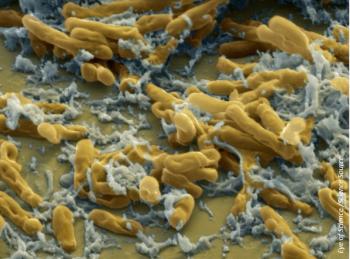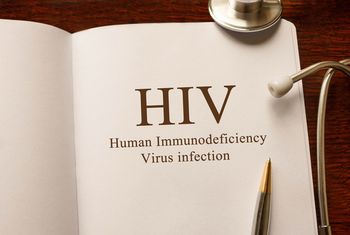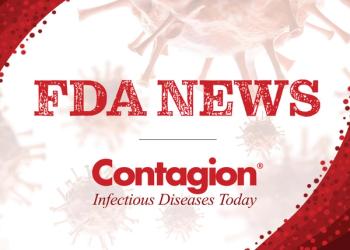
A prediction model using prior health care exposure information could discern patients likely to harbor carbapenem-resistant Enterobacteriaceae at time of hospital admission.

A prediction model using prior health care exposure information could discern patients likely to harbor carbapenem-resistant Enterobacteriaceae at time of hospital admission.

Prequalification status indicates that the vaccine meets the WHO’s standard for efficacy, safety, and quality.

A study on chlamydia and gonorrhea shows testing rates have steadily gone up, but only half of MSM had been tested during 2016-2017 with less than one-third of tests being 3-site.

Agency’s annual report on healthcare-associated bugs highlights reduced incidence of CLABSI, CAUTI, and C diff.

Global vaccination coverage remained relatively stagnant at about 86% in 2018, while the number of countries reaching the Global Vaccine Action Plan goal of 90% reached a high of 129, the CDC reports.

Overall deaths of young children attributable to lower respiratory infections have dropped by more than half in the past 3 decades. However, the rate of death remains far too high considering that most of these deaths are preventable.

Rates of health care facility-acquired C diff seemed to show improvement, but understanding community-acquired cases better in the future can help aid prevention efforts.

Zika virus was previously only found in regions of Asia, the Pacific Islands, South America, and Africa. ECDC has now confirmed 3 locally acquired cases in southern Europe.

Rasheeta Chandler, PhD, RN, emphasizes including of black women in efforts to end the HIV epidemic and discusses an app she is developing to help women access information about sexual health.

Many African men have a deeply rooted aversion to learning their HIV status. A new study sheds light on their fears and how we can counter them.

A poster presented at ANAC2019 detailed a trauma-informed care education program for nurses providing inpatient care to people living with HIV which received a positive reception from nursing professionals.

The proportion of candidemia cases involving injection drug users rose sharply between 2014 and 2017, a recent study found.

Several key populations with heightened risk for HIV face criminalization in Botswana. The Botswana Family Welfare Association targeted efforts to improve care for these key populations.

Heather Alt, BSN, RN, ACRN, CPH, discusses research on a nurse-led model for same-day initiation of antiretroviral therapy for people newly diagnosed with HIV.

An educational research study reveals positive attitudes and a willingness to provide care among pre-licensure Bachelor of Science nursing students.

Inmates at an NJ facility have their HIV treatment needs met while incarcerated but the lack of transitional care coordination has led many individuals to fall off of the care continuum upon release.

Focus groups in 3 Mbarara schools identified adolescent knowledge, attitudes, and suggestions for HIV prevention in Uganda.

A retrospective review reveals that 8 weeks may be enough time to eliminate HCV in black patients co-infected with HIV, a population which faces barriers to longer treatment courses.

Black MSM who use drugs face substantial barriers to HIV treatment and prevention. A recent study analyzed their needs first-hand by conducting in-depth interviews.

As HIV treatment shifts into primary care, it is important to educate NPs on HIV care and prevention in order to maintain recent gains towards ending the HIV epidemic.

Here is a look at infectious disease-related US Food and Drug Administration (FDA) news from the week of November 3, 2019.

Perceived and actual risk of cardiovascular disease is only weakly associated in people living with HIV. An analysis reveals that provider CVD risk discussion is significantly associated with perception of CVD susceptibility.

A new study examined young adults with perinatally acquired HIV living in South Florida in order to shed light on their lived experiences.

We’ve rounded up a list of important US Food and Drug Administration (FDA) and US Department of Agriculture (USDA) recalls from this past week.

Neither infectious disease specialists nor primary care providers appear to consider PrEP care to fall within their practice, and similar debates have taken place between nurses and physicians.

A new protocol for nurse care management called NCM4HIV is designed to meet the needs of youth experiencing homelessness.

Stay up-to-date on the latest infectious disease news by checking out our top 5 articles of the week.

Shannon Weber, MSW, delivered the opening keynote at ANAC 2019 on the importance of empathy when working with people living with HIV.

People living with HIV are twice as likely as those who do not have HIV to develop cardiovascular disease, yet recent data suggest this population does not meet recommended levels of physical activity.

A recent study suggests that smokers living with HIV were willing to transition to electronic cigarettes and had lower carbon monoxide levels after doing so.